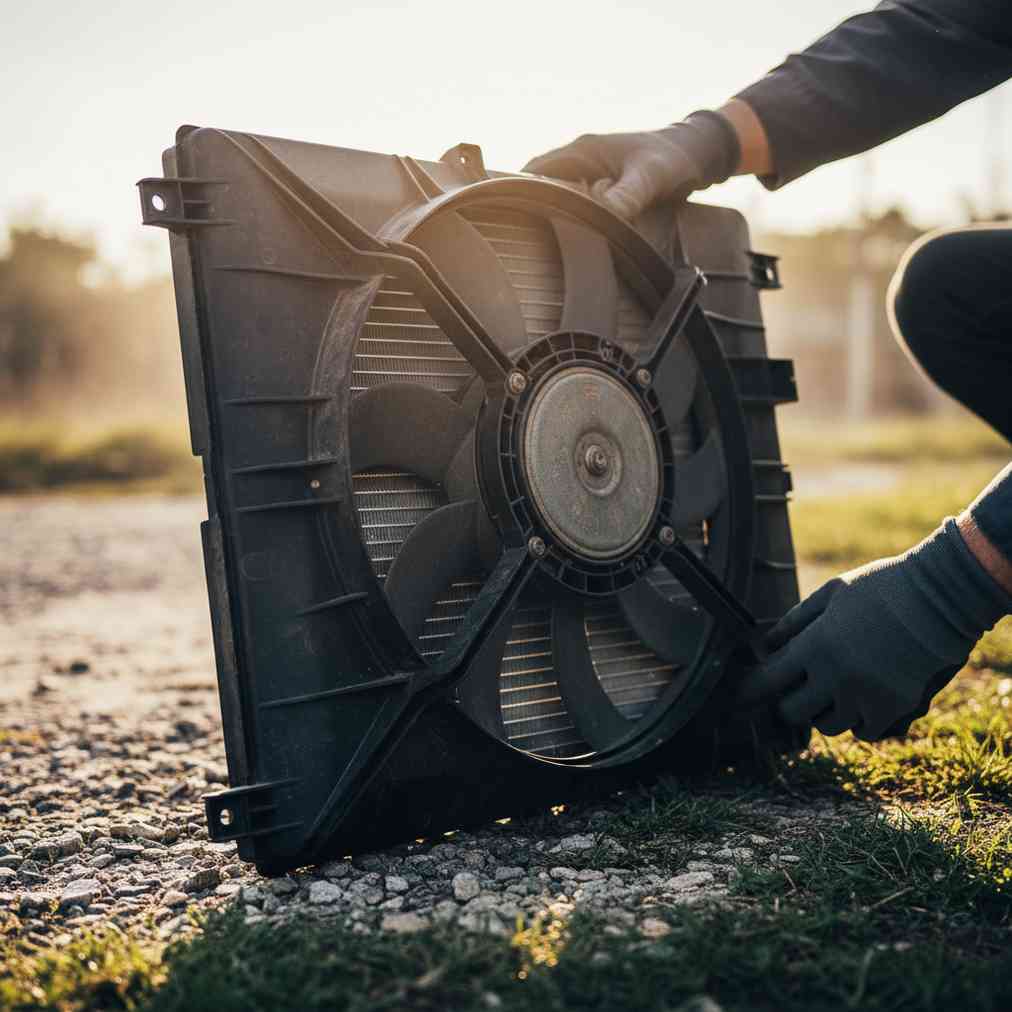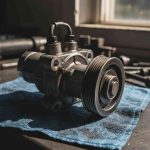Understanding the Critical Role of Radiator Fan Assemblies
The radiator fan assembly serves as your engine’s lifeline, especially when natural airflow can’t keep your vehicle cool. This critical cooling system part becomes essential when you’re stuck in traffic, idling at red lights, or crawling through parking lots. Without proper air movement across the radiator fins, your engine coolant can’t dissipate heat effectively, leading to catastrophic overheating and potentially thousands of dollars in engine damage.
Modern vehicles rely heavily on their cooling systems, and the radiator fan assembly consists of three main parts: the fan motors, the fan blades, and the fan shroud. Each element works together to create a unified system that forces air through the radiator when your vehicle’s natural airflow isn’t sufficient. When this system fails, engine temperatures can spike rapidly, making timely replacement crucial for vehicle reliability.
Locating Compatible Radiator Fan Assemblies at Salvage Yards
Finding the right radiator fan assembly requires precise matching of your vehicle’s specifications. When searching through junkyards near me, always verify the Year, Make, Model, and Engine size before investing time in removal. Many modern vehicles feature dual-fan setups, while older models typically use single fans, making compatibility verification essential.
The fan shroud plays a crucial role in directing airflow efficiently through the radiator. This plastic housing channels air precisely where it’s needed and prevents air from bypassing the cooling fins. When possible, acquire the complete assembly including motors, blades, and shroud as one unit. This ensures optimal performance and eliminates compatibility issues between individual parts from different donor vehicles.
- Vehicle compatibility: Match exact year, make, model, and engine specifications
- Fan configuration: Identify single vs. dual fan setups
- Complete assembly: Prioritize getting motors, blades, and shroud together
- Mounting points: Verify attachment points match your vehicle’s radiator
Field Testing Fan Motors with 12V Power Sources
Testing radiator fan motors before purchase saves time and prevents disappointment. The most reliable method involves using a portable 12V power source, such as a cordless drill battery, to verify motor functionality directly in the salvage yard. Many yards even rent or loan batteries specifically for this purpose, recognizing the value of pre-purchase testing.
The testing procedure is straightforward and requires minimal equipment. Locate the fan’s electrical connector and prepare two jumper wires for the connection. You can either unplug the connector entirely or test with it still attached, depending on accessibility. Connect the positive lead from your 12V battery to one terminal and the negative to the other.
- Required tools: Portable 12V battery and jumper wires
- Success indicators: Strong, smooth spinning without unusual noises
- Polarity flexibility: Reversing connections causes backward rotation without damage
- Failure signs: No movement, weak spinning, or grinding sounds
A functioning motor should start spinning immediately upon power application. Listen carefully for any grinding, clicking, or irregular sounds that might indicate bearing wear or internal damage. Remember that DC motors won’t be harmed by reversed polarity – they’ll simply spin backward, making this test forgiving for beginners.
Comprehensive Pre-Purchase Inspection Checklist
Visual inspection proves just as important as functional testing when evaluating used radiator fan assemblies. A systematic approach ensures you identify potential problems before removal, saving valuable time and preventing future failures. Advanced data analysis techniques, similar to those used in modern data science research, can help identify patterns in part failure, but hands-on inspection remains irreplaceable for immediate assessment.
| Part to Inspect | What to Check | Why It Matters |
|---|---|---|
| Fan Blades | Cracks, chips, deformation, missing pieces | Damaged blades cause vibration and reduced efficiency |
| Fan Shroud | Structural cracks, missing sections, mounting tabs | Compromised airflow direction reduces cooling effectiveness |
| Wiring Connectors | Broken tabs, corrosion, burn marks, melting | Poor connections lead to intermittent operation or failure |
| Motor Mounting | Loose bolts, worn bushings, cracked brackets | Unstable mounting causes excessive vibration |
| Overall Condition | Rust, debris accumulation, age-related wear | Heavy corrosion suggests shortened remaining lifespan |
Pay special attention to the fan blades, as damaged blades cannot be individually replaced on most assemblies. Even small cracks can propagate under the stress of high-speed rotation, potentially causing complete blade failure. The shroud deserves equal scrutiny since cracks allow air to bypass the radiator, significantly reducing cooling efficiency.
Electrical Connection Assessment
The electrical connector represents a critical failure point that’s often overlooked during initial inspection. Examine the plastic housing for signs of heat damage, which appears as discoloration, melting, or warped sections. Check that locking tabs function properly and aren’t cracked or broken. Corrosion around terminal pins indicates moisture intrusion and potential future electrical problems.
If the connector shows damage, verify that replacement plugs are available or plan to splice the wiring during installation. Some older vehicles use unique connector designs that can be challenging to source, making the original connector’s condition crucial for successful installation.
Professional Removal Techniques
Once you’ve tested the motor and completed your inspection, efficient removal becomes the final step. Take time to identify all mounting points before beginning disassembly. Most assemblies attach to the radiator or condenser through a combination of clips, bolts, and brackets. Work methodically to avoid damaging surrounding parts or the assembly itself.
- Photograph connections: Document wiring and mounting before removal
- Label parts: Mark orientation and connections for easier installation
- Protect fragile parts: Shield plastic shrouds and fan blades during extraction
- Clean workspace: Remove debris that might fall into the radiator
Modern automotive recycling has evolved significantly, with some facilities now using advanced inventory management systems similar to those described in AI and data science trends to track part availability and condition. However, the fundamentals of hands-on evaluation remain unchanged.
Cost-Effective Alternatives to New Parts
Purchasing used radiator fan assemblies from salvage yards can save 50-70% compared to new OEM parts. This significant cost reduction makes sense for older vehicles where new part costs might exceed the vehicle’s value. If you’re looking to get cash for your junk car instead of repairing it, professional evaluation can help determine the most economical path forward.
“The radiator fan assembly is often the difference between a running vehicle and an expensive engine rebuild. Taking time to properly test and inspect used units ensures reliable performance at a fraction of new part costs.”
Installation Considerations and Compatibility
Successful installation requires attention to several critical factors beyond basic fitment. Verify that the electrical connections match your vehicle’s wiring harness, including connector pin configuration and wire colors. Some vehicles use different fan speeds or control signals that must match between the donor and recipient vehicles.
Modern research in automotive parts compatibility, similar to methodologies used in big data research topics, has shown that seemingly identical parts can have subtle differences affecting performance. Always cross-reference part numbers when possible to ensure exact compatibility.
Maximizing Your Salvage Yard Investment
Smart salvage yard shopping extends beyond finding the right part at the right price. Consider purchasing additional items you might need during installation, such as mounting hardware, electrical connectors, or related cooling system parts. Many yards offer bulk discounts that can reduce your overall project costs.
Keep detailed records of part numbers, donor vehicle information, and installation notes for future reference. This documentation proves invaluable when you need additional parts or when helping fellow enthusiasts with similar projects. The knowledge gained from successful salvage yard ventures becomes a valuable resource for future automotive repairs.
Finding quality used radiator fan assemblies requires patience, knowledge, and systematic inspection techniques. By following proper testing procedures and maintaining thorough inspection standards, you can secure reliable cooling system parts that provide years of faithful service at substantial savings compared to new alternatives.





Leave a Reply
You must be logged in to post a comment.